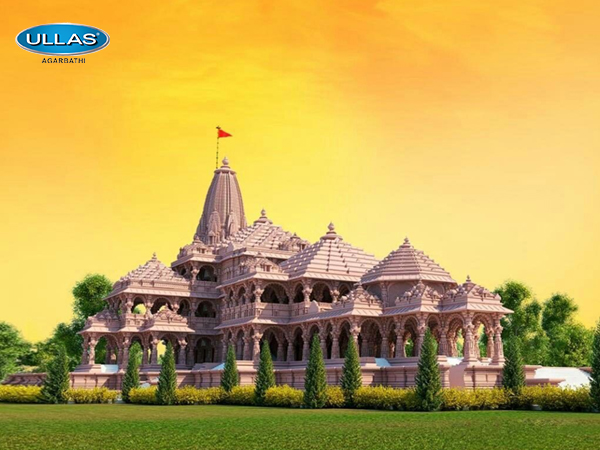Ayodhya Sri Rama Mandir
The Ram Mandir is a Hindu temple that is being built in Ayodhya,
Uttar Pradesh, India, at the site of Ram Janmabhoomi, the hypothesized birthplace of Rama, a principal deity of Hinduism.

The Ram Mandir is a Hindu temple that is being built in Ayodhya, Uttar Pradesh, India, at the site of Ram Janmabhoomi, the hypothesized birthplace of Rama, a principal deity of Hinduism. The temple construction is being supervised by the Shri Ram Janmabhoomi Teerth Kshetra. The ground-breaking ceremony was performed on 5 August 2020 by Indian Prime Minister Narendra Modi. The temple premises will include temples dedicated to deities Surya, Ganesha, Shiva, Durga, Annapurna and Hanuman.

History Of Ayodhya Sri Rama Mandir
Rama, an incarnation of god Vishnu, is a widely worshiped Hindu deity. According to the ancient Indian epic, Ramayana, Rama was born in Ayodhya. In the 16th century, the Mughals constructed a mosque, the Babri Masjid which is believed to be the site of the Ram Janmabhoomi, said to be birthplace of Rama.[8] A violent dispute arose in the 1850s.
In the 1980s, the Vishwa Hindu Parishad (VHP), belonging to the Hindu nationalist family Sangh Parivar, launched a new movement to reclaim the site for Hindus and to erect a temple dedicated to the infant Rama (Ram Lalla) at this spot. In November 1989, the VHP laid the foundations of a temple on land adjacent to the disputed mosque. On 6 December 1992, the VHP and the Bharatiya Janata Party organised a rally at the site involving 150,000 volunteers, known as kar sevaks. The rally turned violent, and the crowd overwhelmed the security forces and tore down the mosque.
The demolition resulted in several months of intercommunal rioting between India's Hindu and Muslim communities, causing the death of at least 2,000 people, and triggering riots all over the Indian subcontinent. A day after the demolition of the mosque, on 7 December 1992, The New York Times reported that over 30 Hindu temples across Pakistan were attacked, some set on fire, and one demolished. The government of Pakistan closed schools and offices in a day of protest.[12] Hindu temples in Bangladesh were also attacked.[9] Some of these Hindu temples that were partially destroyed during the retaliation of Babri Masjid have since remained that way.
On 5 July 2005, five terrorists attacked the makeshift Ram temple at the site of destroyed Babri Mosque in Ayodhya, India. All five were shot dead in the ensuing gunfight with the Central Reserve Police Force (CRPF), while one civilian died in the grenade attack that the attackers launched to breach the cordoned wall. The CRPF suffered three casualties, two of whom were seriously injured with multiple gunshot wounds.
A 1978 and 2003 archaeological excavation by the Archaeological Survey of India (ASI) found evidence indicating that Hindu temple remains had existed on the site.Archeologist KK Muhammad accused several historians of undermining the findings.Over the years, various title and legal disputes also took place, such as the passage of the Acquisition of Certain Area at Ayodhya Ordinance, 1993. It was only after the 2019 Supreme Court verdict on Ayodhya dispute that it was decided the disputed land be handed over to a trust formed by the Indian government for the construction of a Ram temple. The trust was eventually formed under the name Shri Ram Janmabhoomi Teerth Kshetra. Five acres of land was allocated for the mosque 22 km away in the city in Dhannipur village.[19] On 5 February 2020, it was announced in the Parliament that the Narendra Modi government had accepted a plan to construct the temple.

